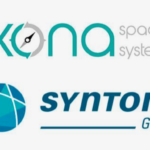Low-power GNSS chipset solutions provider etherWhere has partnered with Xona Space Systems to develop a receiver that tracks Xona’s multi-frequency PULSAR signal. PULSAR, a next-generation position, navigation, and timing (PNT) service, is provided by a constellation of small, powerful low Earth orbit (LEO) satellites that are 20 times closer to Earth than existing GPS.
The PULSAR + dual-band GNSS receiver will be a one chip, low power solution that integrates all four GNSS constellations while receiving and processing the Xona PULSAR signal simultaneously, according to a news release. The single chip solution with single digit mW power consumption will further enable IoT, asset tracking, mobile, precise timing and secure geolocation applications.
etherWhere’s Hybrid Constellation solution is a combination of traditional GNSS receivers and LEO satellite receivers integrated into one low power silicon. It is ideal for applications that need low power, redundancy and security with anti-jamming and anti-spoofing technology.
“Integrating Xona PULSAR into our new products will empower users with PNT performance in the smallest form factor and lowest cost they’ve never witnessed before,” etherWhere CEO Michael Raam said, according to the release. “There is tremendous value in what our PULSAR + dual-band GNSS receivers can achieve.”
Xona’s PULSAR signal enables enhanced multipath mitigation and higher accuracy, as well as better protection from interference and spoofing. PULSAR can be easily integrated into a variety of solutions, including traditional GNSS receivers.
In August, Xona announced a collaboration with Lockheed Martin. The companies will work together to protect PULSAR services in accordance with military-grade security practices, and will accelerate and refine the development of features such as signal security and license management.
“While Xona’s business is commercial, we are all aware of the national security importance of a modernized global navigation system, and consequently such a system requires the same level of protection that would be afforded other critical national infrastructures,” said Steve Kyle, senior manager for Cyber Innovation at Lockheed-Martin, according to a news release about the collaboration.
Earlier in the month, Xona announced a partnership with the Air Force Research Laboratory (AFRL) and the U.S. Space Force to accelerate the development of its LEO PNT architecture that leverages the company’s PULSAR service.
Other Xona partners include Syntony, Spirent and Hexagon | NovAtel. In June, Hexagon | NovAtel demonstrated that its OEM7 GNSS receivers can track a Spirent Communications simulated signal that’s identical to the PULSAR signal broadcast by Xona’s LEO satellites.
Xona is currently preparing for its first production satellite launches, which are slated for 2024.






